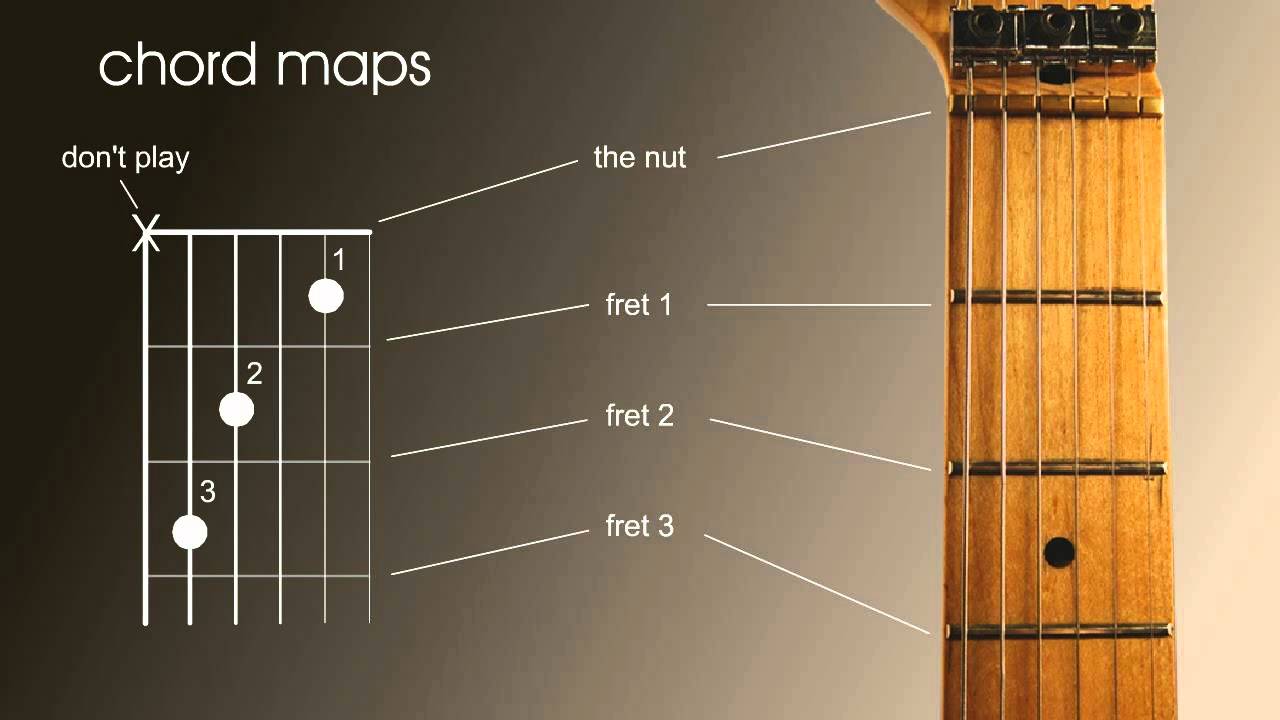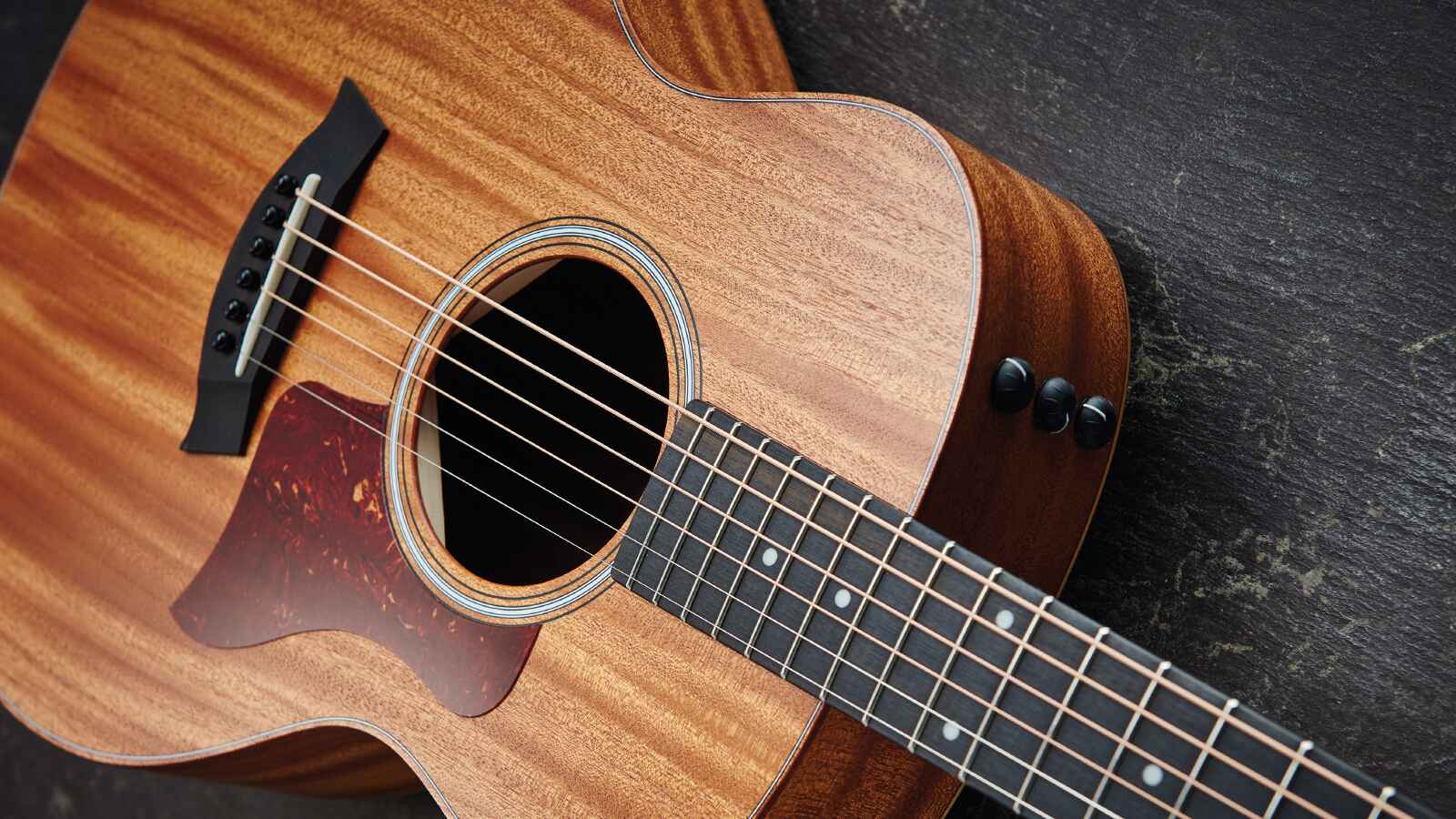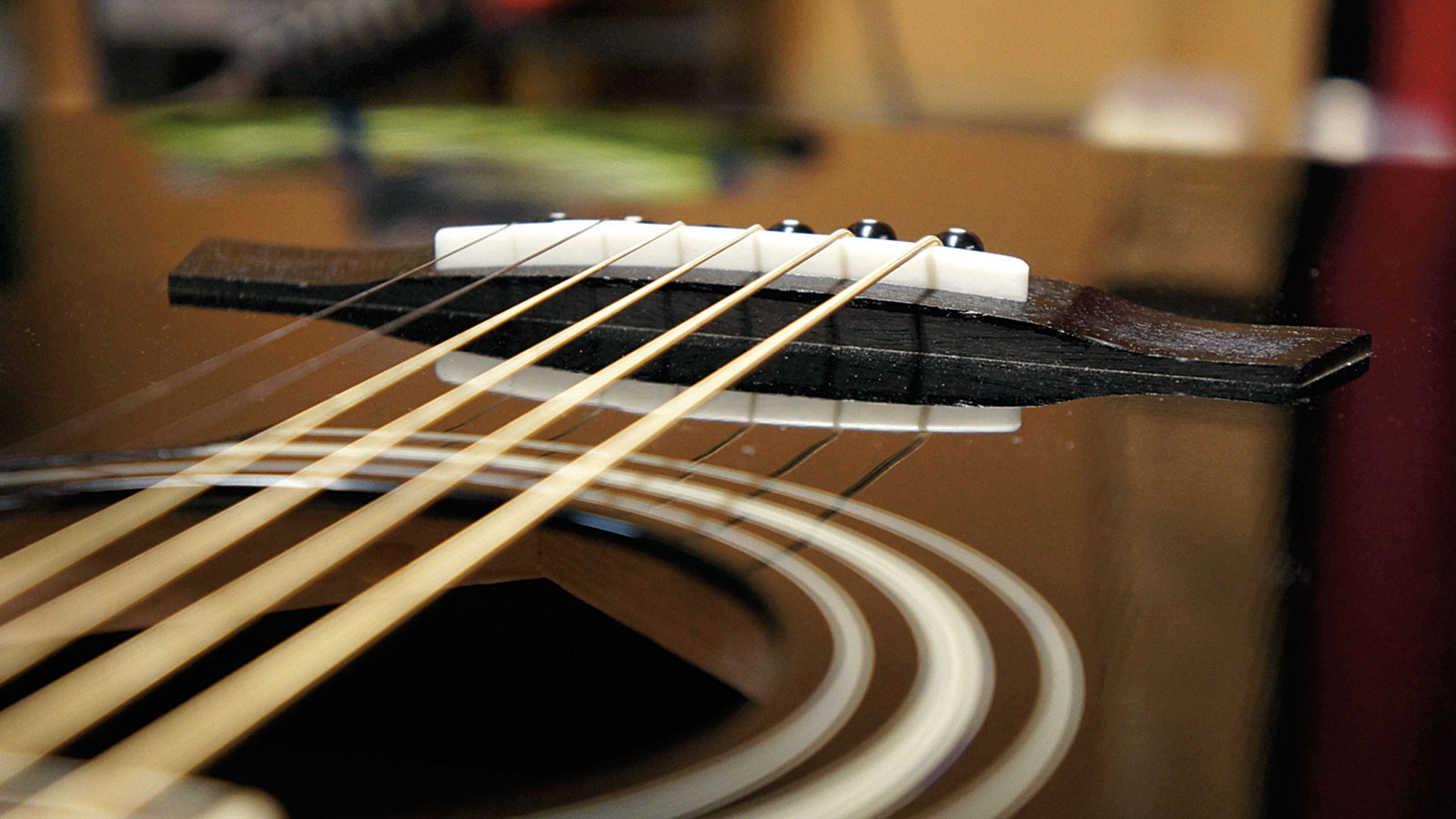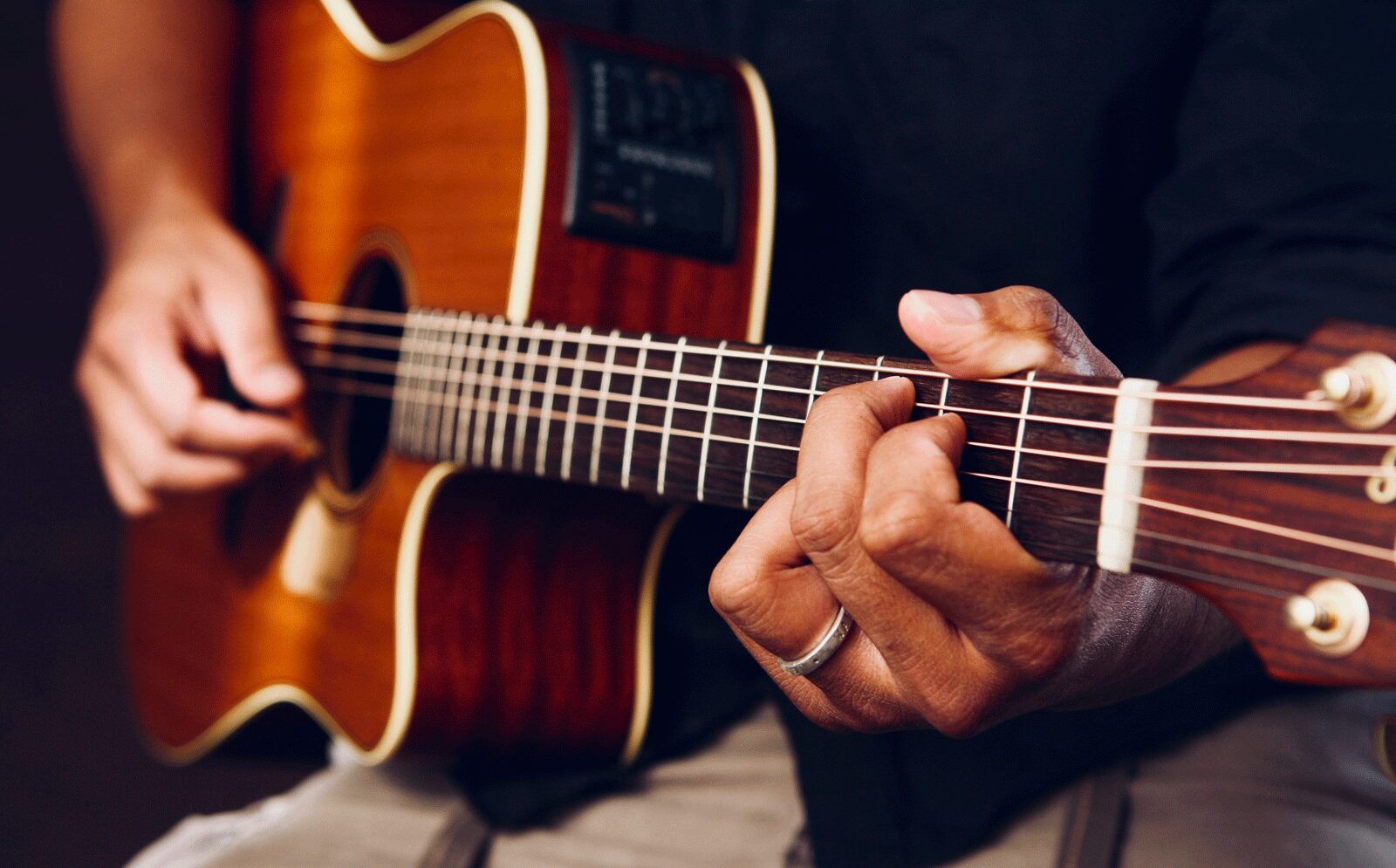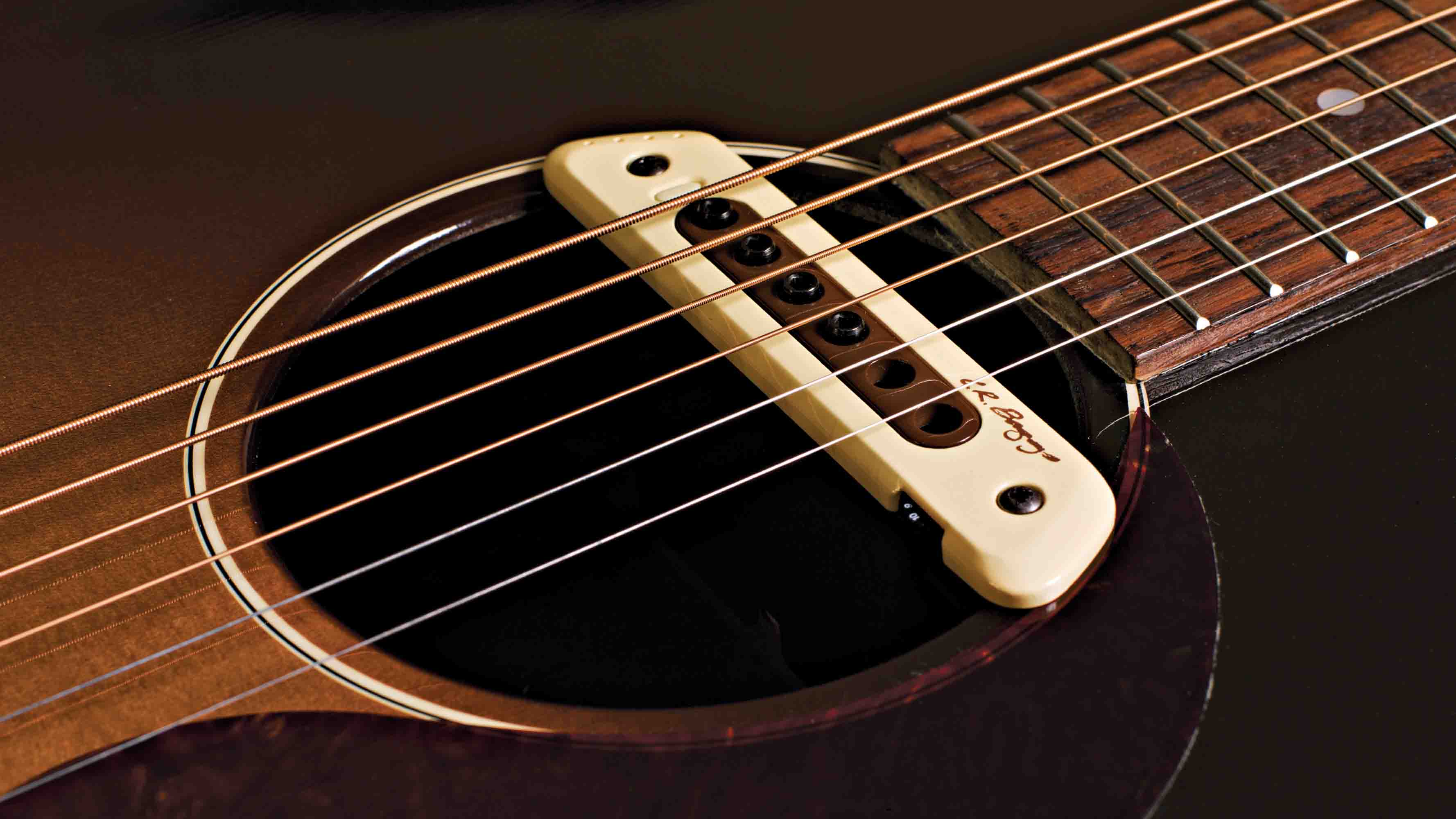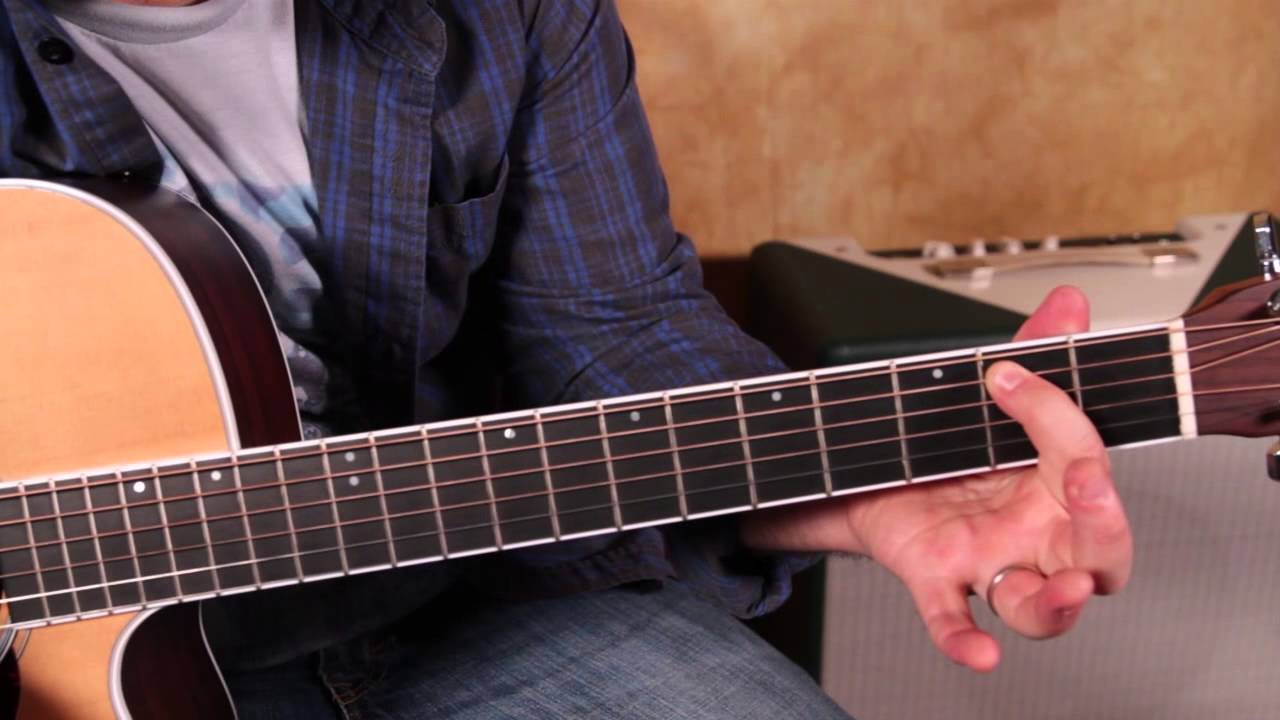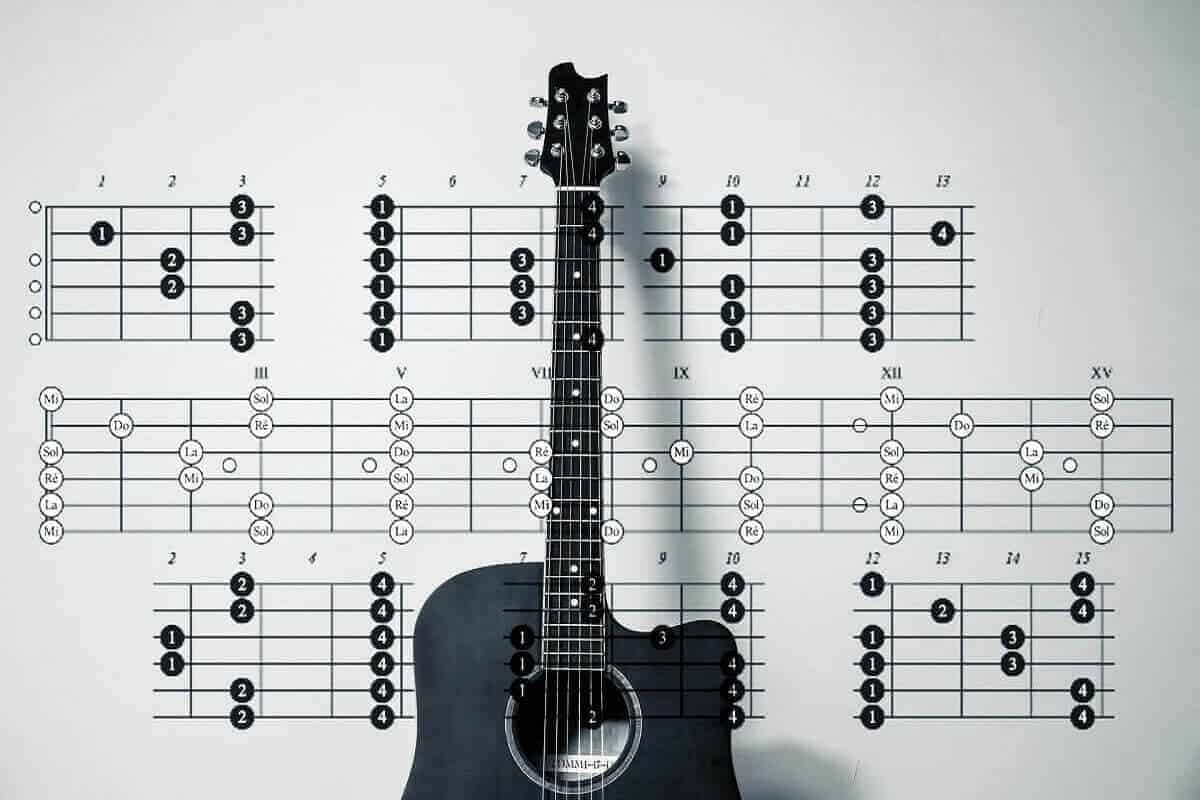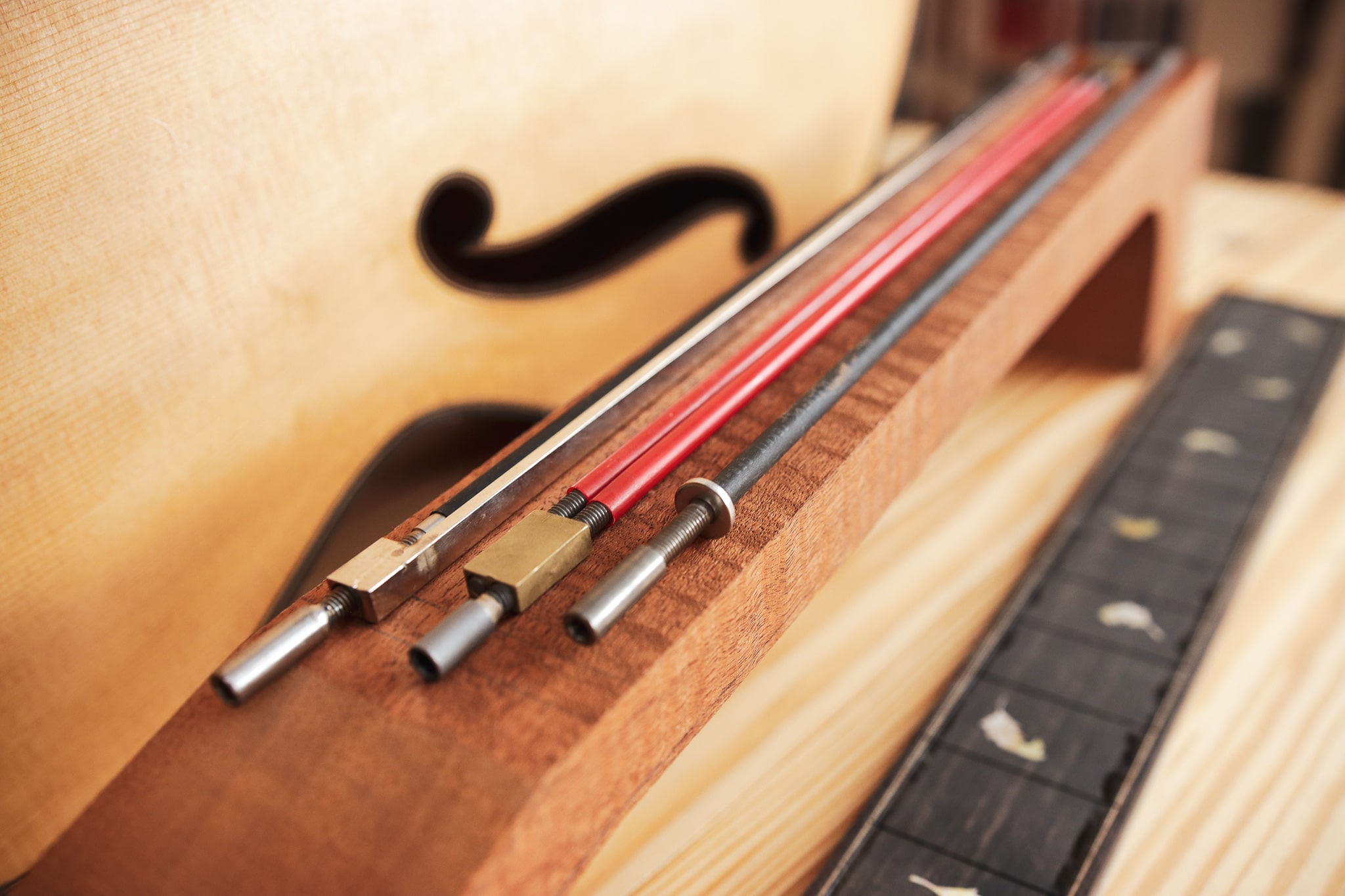Introduction
Learning to play the acoustic guitar is an exhilarating journey that opens up a world of musical possibilities. Whether you’re a beginner or an experienced player, one essential skill you should develop is the ability to read guitar notes. The ability to read sheet music and understand note values, rhythms, chords, and melodies will greatly enhance your playing and allow you to explore a vast repertoire of songs.
Reading guitar notes may seem intimidating at first, especially if you’re not familiar with music notation. However, with a little patience and practice, you’ll soon become comfortable navigating through the various symbols and markings on the page.
In this article, we will guide you through the process of learning to read acoustic guitar notes. We will cover the basics of the standard notation system, including the treble clef and note values. We’ll also explore topics such as ledger lines, accidentals, guitar chords, and tablature. Additionally, we’ll provide some helpful tips and tricks to improve your reading skills.
By the end of this article, you’ll have a solid foundation in reading guitar notes and be well on your way to becoming a proficient guitarist. So grab your acoustic guitar, and let’s dive in!
Understanding the Basics of Guitar Notes
Before we delve into reading guitar notes, it’s important to have a basic understanding of how notes are represented in music. In Western music notation, a note is an abstract representation of a specific pitch and duration.
The pitch of a note is determined by its position on the musical staff. The staff consists of five horizontal lines and four spaces, representing different pitches. The higher the note on the staff, the higher the pitch.
Note duration is denoted by the shape of the note. A whole note, for example, represents four beats, while a quarter note represents one beat. By combining different note durations, you can create rhythms and melodies.
Each note on the musical staff has a corresponding letter name, ranging from A to G. The musical alphabet then repeats after G. For example, after G comes A again, followed by B, C, and so on.
Understanding the relationship between these letter names and the positions on the musical staff is crucial for reading guitar notes. It allows you to easily locate and play the desired notes on the guitar fretboard.
In addition to the staff, there are other symbols and markings that you’ll encounter when reading guitar notes. These include the treble clef, which indicates the range of notes for a particular staff. The treble clef looks like a stylized “G” and is often used for guitar music.
Another important symbol is the time signature, which appears at the beginning of a piece of music. The time signature tells you the number of beats in each measure and which note receives one beat.
By familiarizing yourself with these basic concepts, you’ll be well equipped to dive into the world of guitar notes. Let’s move on to exploring the standard notation system and how it applies to reading acoustic guitar music.
The Standard Notation System
The standard notation system is a universal method of representing music on paper. It allows musicians from different backgrounds to communicate and interpret music accurately.
At the core of the standard notation system are two clefs: the treble clef and the bass clef. The treble clef, also known as the G clef, is commonly used for guitar and other high-pitched instruments. It indicates that the notes will be played on the upper range of the musical staff. The bass clef, on the other hand, is used for lower-pitched instruments and represents the lower range of the staff.
For acoustic guitar, we primarily focus on reading the treble clef. It’s important to familiarize yourself with the positions of the notes on the staff and their corresponding letter names on the guitar fretboard.
In addition to notes, the standard notation system uses other symbols and markings to convey important musical information. These include accidentals such as sharps (#) and flats (b), which raise or lower a note by a half step respectively. Accidentals are denoted by symbols placed in front of a note on the staff.
Another useful symbol is the natural sign (♮), which cancels out the effect of a sharp or flat and returns the note to its original pitch. It’s important to pay attention to accidentals and naturals when reading guitar notes, as they can significantly alter the sound of a melody or chord.
Furthermore, musical notation includes different note values, such as whole notes, half notes, quarter notes, and so on. These note values represent the duration of a note and help musicians understand the rhythm and timing of a piece of music.
By familiarizing yourself with the standard notation system and the various symbols and markings, you’ll be able to decipher and interpret guitar music more effectively. Understanding the treble clef, accidentals, and note values is the foundation for reading guitar notes accurately.
Now that we’ve covered the basics of the standard notation system, let’s move on to mastering the treble clef and recognizing different note values.
Learning to Read the Treble Clef
The treble clef is a fundamental element of guitar music notation. Also known as the G clef, it indicates that the notes will be played in the higher range of the musical staff. Understanding the treble clef is essential for accurately reading and playing guitar notes.
The treble clef consists of a stylized “G” shape that wraps around the second line of the musical staff. This line is known as the G line because it represents the note G above middle C. With this knowledge, you can easily identify and locate the position of different notes on the treble clef.
Each line and space of the treble clef correspond to a specific note. The lines of the treble clef, from bottom to top, represent E, G, B, D, and F. The spaces, from bottom to top, represent F, A, C, and E. These notes form the basic framework for reading guitar music.
One useful mnemonic to remember the note names on the lines of the treble clef is “Every Good Boy Deserves Fudge.” For the spaces, you can use the mnemonic “FACE.”
Reading guitar notes in the treble clef involves recognizing the position of the note on the musical staff and translating it to the corresponding position on the guitar fretboard. This is where a solid understanding of the note names and their positions on the guitar comes in handy.
As you become familiar with the treble clef and its note positions, take time to practice recognizing different notes and playing them on your guitar. Start with simple melodies and gradually progress to more complex pieces.
Additionally, it’s important to pay attention to other elements in the music notation, such as note duration and rhythmic patterns. These elements determine the timing and duration of each note and contribute to the overall musical expression of a piece.
By mastering the treble clef and its note positions, you’ll be able to navigate guitar music notation with ease. This knowledge sets the foundation for reading more advanced guitar notes and exploring a vast repertoire of songs.
Next, let’s delve into the different note values and their significance in guitar notation.
Recognizing the Different Note Values
When reading guitar notes, it’s essential to understand the different note values and their durations. Note values indicate the length of time that a note is played, contributing to the rhythm and timing of a piece. By recognizing these note values, you’ll be able to accurately interpret the music and play it with the desired rhythm.
Here are some common note values you’ll encounter:
- Whole Note: A whole note is denoted by an open circle and represents four beats. It’s the longest note value in music notation.
- Half Note: A half note is a solid stem with a hollow notehead. It represents two beats.
- Quarter Note: A quarter note is a solid stem with a filled-in notehead. It represents one beat and is the most common note value.
- Eighth Note: An eighth note is a solid stem with a filled-in notehead and a flag. It represents half a beat.
- Sixteenth Note: A sixteenth note is a solid stem with a filled-in notehead and two flags. It represents a quarter of a beat.
These note values can be combined in various ways to create different rhythmic patterns and melodies. For example, two quarter notes are equivalent to one half note, four eighth notes are equivalent to one quarter note, and so on.
It’s important to pay attention to the rhythm and duration of each note when reading guitar music. The note values and their relationships dictate how long each note should be held, creating a sense of timing and groove in the music.
In addition to the note values, you may also encounter symbols such as rests. Rests indicate periods of silence or pauses in the music. They are essential for maintaining proper timing and allowing space between notes.
By familiarizing yourself with the different note values and their durations, you’ll be able to interpret guitar music notation accurately. As you practice reading guitar notes, focus on the rhythm and timing of each note, striving to play with precision and musicality.
Now that you have an understanding of note values and their significance, let’s explore some additional concepts that will enhance your ability to read guitar notes.
Understanding Ledger Lines and the Guitar Fretboard
When reading guitar notes, it’s common to encounter pitches that extend beyond the staff. In order to represent these higher or lower pitches, ledger lines are used. Ledger lines are short lines that extend above or below the regular lines and spaces of the musical staff.
On the treble clef, ledger lines above the staff represent higher pitches, while ledger lines below the staff represent lower pitches. It’s important to pay attention to these ledger lines and interpret their positions on the guitar fretboard.
As a guitarist, understanding the relationship between guitar notes and the fretboard is crucial for accurately translating the music notation into actual finger positions. Each note on the staff corresponds to a specific pitch on the guitar, creating a direct connection between the musical staff and the guitar fretboard.
For example, the note E on the bottom line of the treble clef corresponds to the open string E on the guitar. Similarly, the note D on the fourth line of the treble clef corresponds to the 7th fret on the A string of the guitar.
By recognizing the positions of notes on the staff and understanding their corresponding positions on the fretboard, you’ll be able to quickly locate and play the desired notes on the guitar.
In addition to the ledger lines and recognizing note positions on the guitar fretboard, it’s important to develop a solid understanding of the different strings and frets on the guitar. Each string corresponds to a specific note when played open, and pressing down on different frets changes the pitch of the note produced.
Familiarize yourself with the open strings of the guitar and their corresponding notes: E, A, D, G, B, and E (from lowest to highest). This knowledge will help you easily identify and play the correct notes when reading guitar music.
It’s also beneficial to practice exercises that focus on note recognition and finding the corresponding positions on the guitar fretboard. This will strengthen your connection between music notation and actual guitar playing, allowing you to read guitar notes more fluently.
With a solid understanding of ledger lines and the guitar fretboard, you’ll be equipped to read guitar notes that extend beyond the confines of the musical staff. Let’s now move on to mastering accidentals and understanding sharps and flats.
Mastering Accidentals and Sharps/Flats
Accidentals are symbols used in music notation to alter the pitch of a note. The two most common accidentals are sharps (#) and flats (b). Understanding how these symbols affect a note’s pitch is essential for accurately reading guitar notes.
A sharp (#) raises the pitch of a note by a half step, which means it moves one fret higher on the guitar fretboard. For example, if you see a note marked with a sharp symbol on the staff, you would play the note one fret higher on the corresponding string of the guitar.
Conversely, a flat (b) lowers the pitch of a note by a half step, which means it moves one fret lower on the guitar fretboard. If you encounter a note marked with a flat symbol, you would play the note one fret lower on the corresponding string of the guitar.
Accidentals can appear either at the beginning of a piece of music in the key signature or as temporary markings throughout the music. In the key signature, accidentals indicate that specific notes throughout the piece are consistently sharp or flat. Temporary accidentals appear as needed, often to modify a note notated differently within the key signature.
It’s important to pay close attention to accidentals when reading guitar notes, as they significantly alter the melody or chord progression. Be aware of changes in pitch due to sharps or flats and adjust your playing accordingly.
In addition to the basic sharp and flat symbols, there are double sharps (x) and double flats (bb), which raise or lower a note by two half steps respectively. These symbols are less common but may be encountered in more complex guitar music.
Mastering accidentals and understanding how sharps and flats affect note pitch will allow you to accurately interpret the music and play the correct notes on the guitar. Take time to familiarize yourself with the up and down movements on the guitar fretboard as you encounter sharps and flats in the music notation.
Now that we’ve covered accidentals and their impact on note pitch, let’s explore reading guitar chords and tablature.
Reading Guitar Chords and Tablature
When it comes to playing guitar, chords are an essential element. Chords are made up of multiple notes played together, creating a harmonious sound. Reading guitar chords in music notation or chord charts allows you to quickly identify and play the desired chord shapes.
Guitar chords are typically represented by chord symbols above the staff or by diagrams in chord charts. Chord symbols consist of letters and numbers that indicate the root note and additional information about the chord, such as its quality (major, minor, diminished, etc.) and any additional notes or modifications.
Chord diagrams in chord charts visually represent the chord shapes on the guitar fretboard. These diagrams show the placement of fingers on specific frets and strings, illustrating the fingerings needed to play the chord.
Tablature, also known as “tab,” is another popular system for reading guitar music. Tablature represents the guitar fretboard horizontally, with each line corresponding to a string on the guitar. Numbers on the lines indicate which fret to press down on that string.
Tablature can be easier to understand for beginner guitarists, as it provides a visual representation of finger placement on the guitar fretboard. However, it lacks some of the rhythmic information provided by traditional music notation, so it’s often used in conjunction with standard notation.
By learning to read guitar chords and tablature, you’ll have access to a wide variety of songs and be able to play along with other musicians more easily. Practice recognizing chord symbols, understanding chord diagrams, and interpreting tablature to improve your proficiency in reading guitar music.
Now that we’ve explored reading guitar chords and tablature, let’s move on to practicing sight-reading exercises to further enhance your reading skills.
Practicing Sight-Reading Exercises
Sight-reading is the skill of being able to read and play music on the spot without prior preparation. It is a valuable skill for any guitarist and can greatly enhance your musical abilities. Practicing sight-reading exercises can help improve your reading skills, rhythm, and overall musicianship.
When practicing sight-reading, it’s important to start with music that is slightly below your current playing level. This allows you to focus on reading the notes and rhythms accurately without feeling overwhelmed. As you become more proficient, you can gradually increase the difficulty level of the music.
One effective way to practice sight-reading is by using sight-reading books or online resources specifically designed for guitar. These resources provide a variety of musical exercises at different levels, allowing you to gradually develop your sight-reading skills.
When starting a sight-reading exercise, take a moment to analyze the key signature, time signature, and any other markings on the page. This will give you a mental roadmap of what to expect as you read through the music.
As you play through the exercise, focus on following the music notation precisely. Play the correct notes, rhythms, and dynamics indicated on the page. It’s important not to stop or hesitate, even if you make mistakes. Keep the tempo steady and continue playing through to the end of the exercise.
When practicing sight-reading, try to challenge yourself by reading different styles of music. This will expose you to new musical patterns and help you become more versatile in your playing. Additionally, practice sight-reading both melody lines and chord progressions to further enhance your reading skills.
Consistency is key when practicing sight-reading. Set aside dedicated practice time each day to work on sight-reading exercises. The more frequently you practice, the quicker your reading skills will improve.
Remember to be patient and give yourself time to develop this skill. Sight-reading may feel challenging at first, but with consistent practice, it will become more natural and intuitive.
Incorporate sight-reading exercises into your regular practice routine to continuously improve your reading abilities. This skill will not only benefit you as a guitarist but also open doors to playing with other musicians and exploring a wider range of musical opportunities.
Now, let’s move on to some helpful tips and tricks that will further enhance your reading skills and make the process more enjoyable.
Tips and Tricks for Improving Your Reading Skills
Improving your reading skills is a continuous process that can greatly enhance your ability to interpret and play guitar music. Here are some tips and tricks to help you improve your reading skills:
- Practice regularly: Dedicate consistent practice time to sight-reading exercises and reading guitar music. The more you practice, the more comfortable and fluent you’ll become at reading notes and rhythms.
- Start slow: Begin with music that is slightly below your current skill level, then gradually increase the difficulty. This allows you to build a strong foundation and work on accuracy before tackling more challenging pieces.
- Focus on rhythm: Pay close attention to the rhythmic patterns and subdivisions in the music. Practice clapping or tapping along with the rhythms to internalize the timing and feel of the piece.
- Divide and conquer: Break down longer phrases or complex passages into smaller chunks. Practice each chunk separately, then gradually put them together. This approach helps you tackle challenging sections more effectively.
- Use a metronome: Practice sight-reading exercises with a metronome to develop a steady sense of timing. Start at a comfortable tempo and gradually increase the speed as you become more proficient.
- Read ahead: Train yourself to look ahead in the music as you play. This allows you to prepare for upcoming notes or chords, reducing the chance of mistakes and enhancing your overall reading fluency.
- Practice different styles: Read music from various genres and styles to broaden your musical vocabulary. Each genre presents unique challenges and patterns that will improve your adaptability as a guitarist.
- Record and review: Record yourself playing sight-reading exercises and pieces. Listen back and assess your performance, paying attention to areas that need improvement. This self-evaluation will help you identify weak points and track your progress.
- Take it slow with new techniques: If you encounter unfamiliar techniques or symbols in the music, take the time to understand and practice them before attempting to sight-read at full speed. This ensures accuracy and minimizes frustration.
- Play with others: Whenever possible, play music with other musicians. Collaborative playing helps develop ensemble skills and exposes you to different musical interpretations and styles.
Remember, improving your reading skills takes time and dedication. Be patient with yourself and enjoy the process. With consistent practice and these tips in mind, you’ll become a proficient sight-reader and unlock a world of musical possibilities on the guitar.
Now that we’ve covered various tips and tricks, let’s wrap up this article with a brief summary of the key points we’ve discussed.
Conclusion
Learning to read acoustic guitar notes is a valuable skill that can significantly enhance your playing and musical journey. By understanding the basics of music notation, mastering the treble clef, and recognizing different note values, you’ll be able to navigate guitar music with confidence.
As a guitarist, it’s important to develop knowledge of ledger lines and their relationship to the guitar fretboard. Additionally, mastering accidentals and understanding how sharps and flats affect pitch will allow you to interpret music accurately.
Reading guitar chords and tablature provides access to a vast repertoire of songs and enables you to play with other musicians more easily. Practicing sight-reading exercises is crucial for improving your reading skills, rhythm, and overall musicianship.
To enhance your reading abilities, implement tips and tricks such as regular practice, focusing on rhythm, breaking down difficult passages, and utilizing a metronome. Practice different styles of music and challenge yourself to read ahead while playing.
Remember, improving your reading skills takes time, patience, and consistency. Embrace the process and enjoy the journey of becoming a proficient sight-reader on the acoustic guitar.
Now, armed with the knowledge and strategies shared in this article, it’s time to pick up your acoustic guitar, dive into the world of guitar notes, and let your musical journey unfold. Happy reading and playing!







